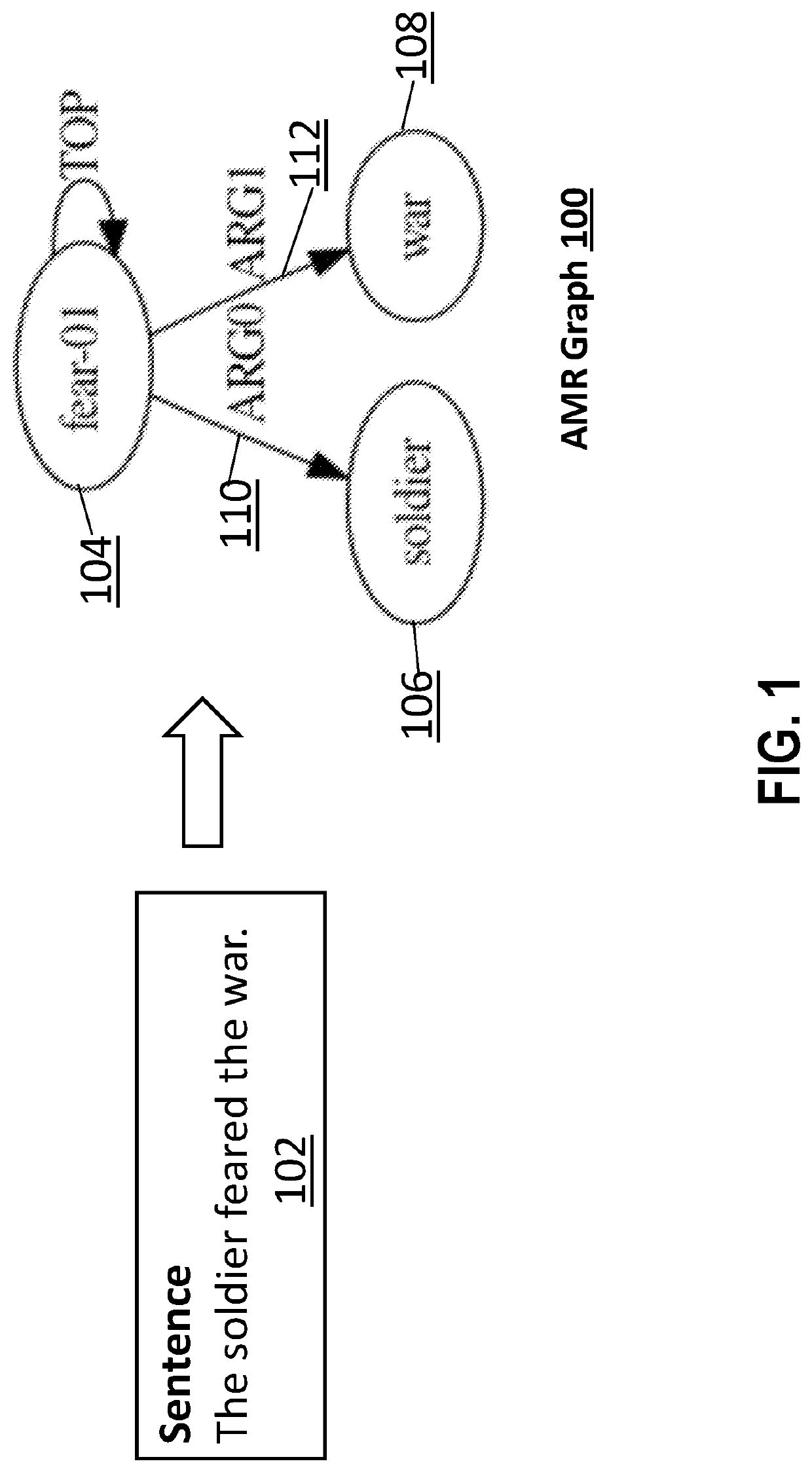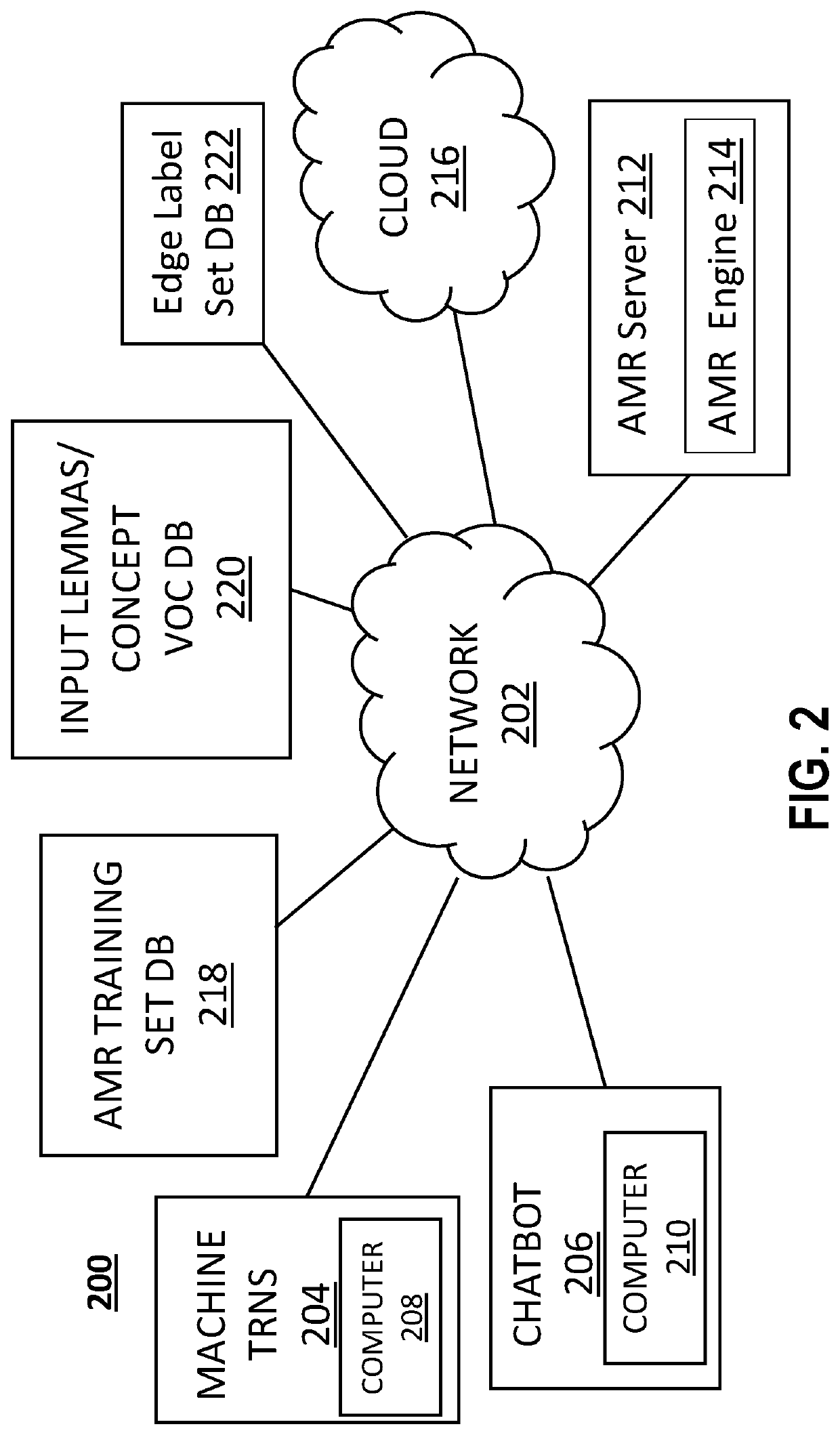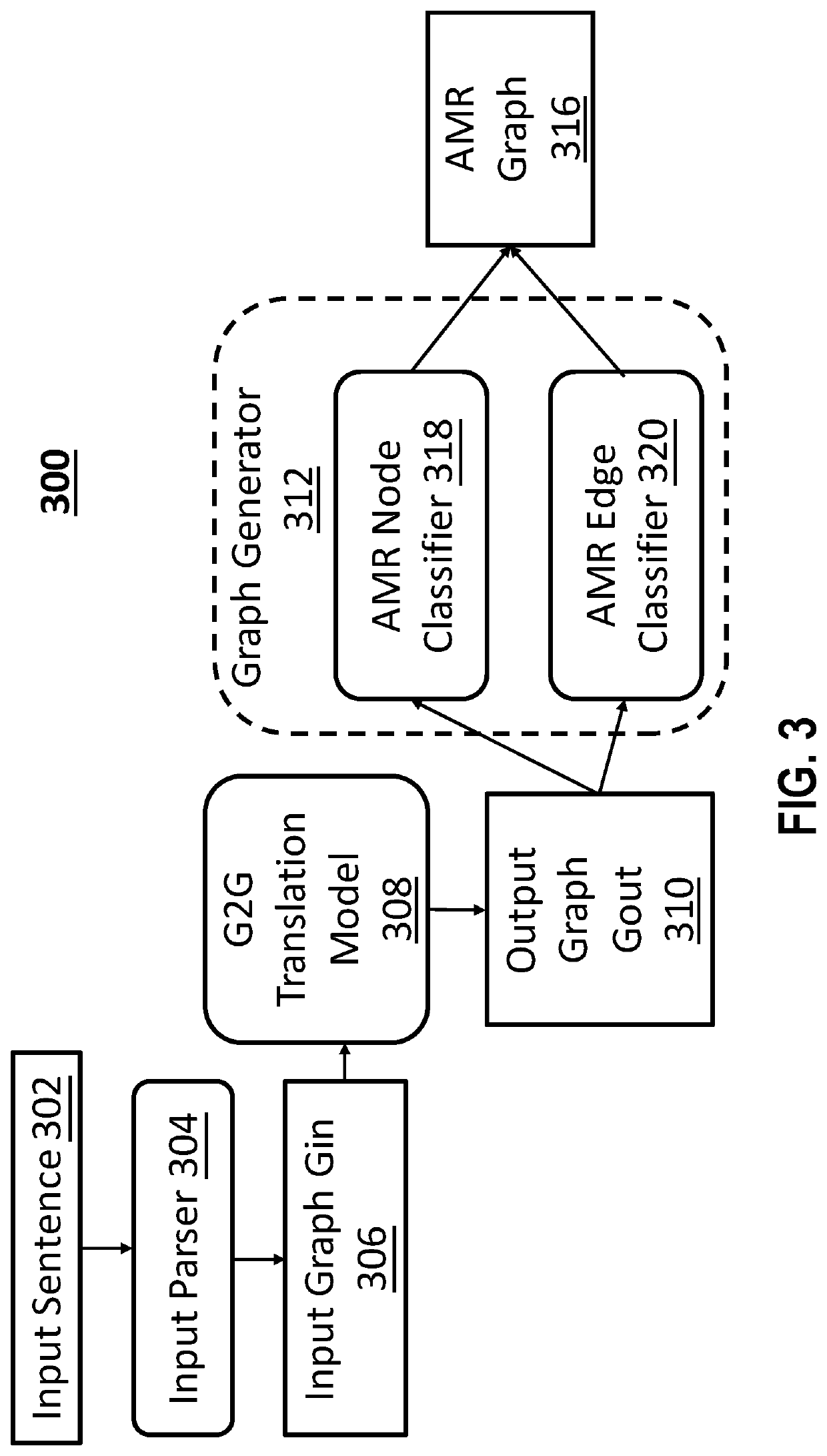Abstract Meaning Representation Parsing with Graph Translation
a graph translation and abstract meaning technology, applied in probabilistic networks, instruments, biological models, etc., can solve the problems of labor-intensive and expensive annotated data, limited labeled data, and limited labeled data
- Summary
- Abstract
- Description
- Claims
- Application Information
AI Technical Summary
Benefits of technology
Problems solved by technology
Method used
Image
Examples
example hierarchical
Edge Classifier
[0059]In addition to assigning the node labels, node connectivity and node relations need to be assigned to edges between nodes. To assign edge connectivity and node relations, a hierarchical edge classifier 614 is provided in FIG. 6. The hierarchical edge classifier first determines whether an edge exists and if the edge exists, the label of the edge. FIG. 9 is a block diagram of an example of an edge classifier 900 corresponding to the hierarchical edge classifier 614 of FIG. 6. The hierarchical edge classifier 900 in this example includes a neural network, such as a single-layer or multi-layer Feedforward neural network, for example.
[0060]For an edge candidate with a head node and a tail node, a head projection layer 904 transforms the aligned node representation 902 of the head node, and a tail projection layer 906 transforms the representation of the tail node. The transformed representations are used for edge existence and label classification. The output of the...
example cloud
Platform
[0084]As discussed above, functions relating to AMR graph generation according to embodiments of the disclosure may be performed in whole or in part in the cloud 216, shown in FIG. 2. It is to be understood that although this disclosure includes a detailed description on cloud computing, implementation of the teachings recited herein are not limited to a cloud computing environment. Rather, embodiments of the present disclosure are capable of being implemented in conjunction with any other type of computing environment now known or later developed.
[0085]Cloud computing is a model of service delivery for enabling convenient, on-demand network access to a shared pool of configurable computing resources (e.g., networks, network bandwidth, servers, processing, memory, storage, applications, virtual machines, and services) that can be rapidly provisioned and released with minimal management effort or interaction with a provider of the service. This cloud model may include at leas...
PUM
 Login to View More
Login to View More Abstract
Description
Claims
Application Information
 Login to View More
Login to View More - R&D
- Intellectual Property
- Life Sciences
- Materials
- Tech Scout
- Unparalleled Data Quality
- Higher Quality Content
- 60% Fewer Hallucinations
Browse by: Latest US Patents, China's latest patents, Technical Efficacy Thesaurus, Application Domain, Technology Topic, Popular Technical Reports.
© 2025 PatSnap. All rights reserved.Legal|Privacy policy|Modern Slavery Act Transparency Statement|Sitemap|About US| Contact US: help@patsnap.com



